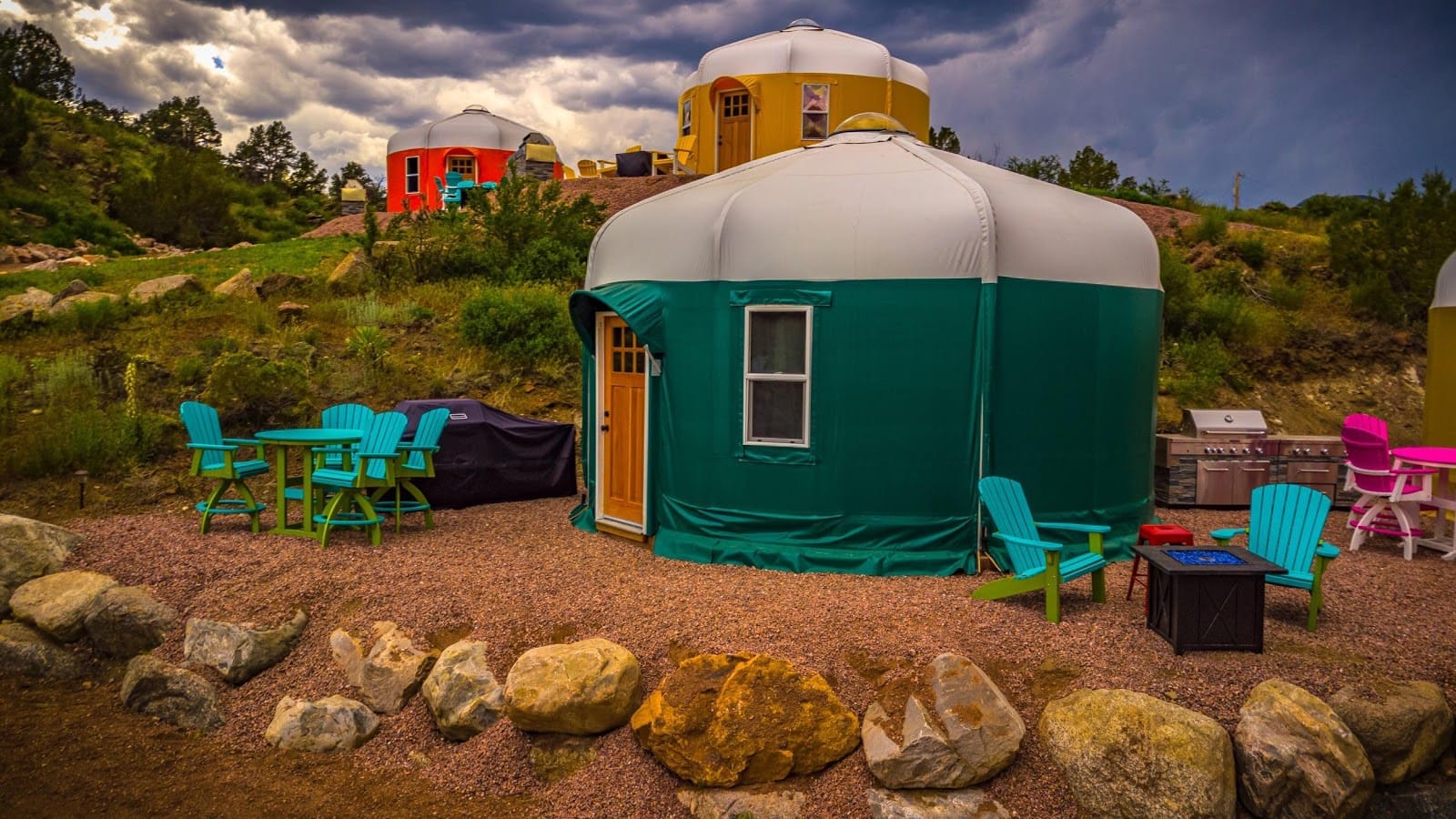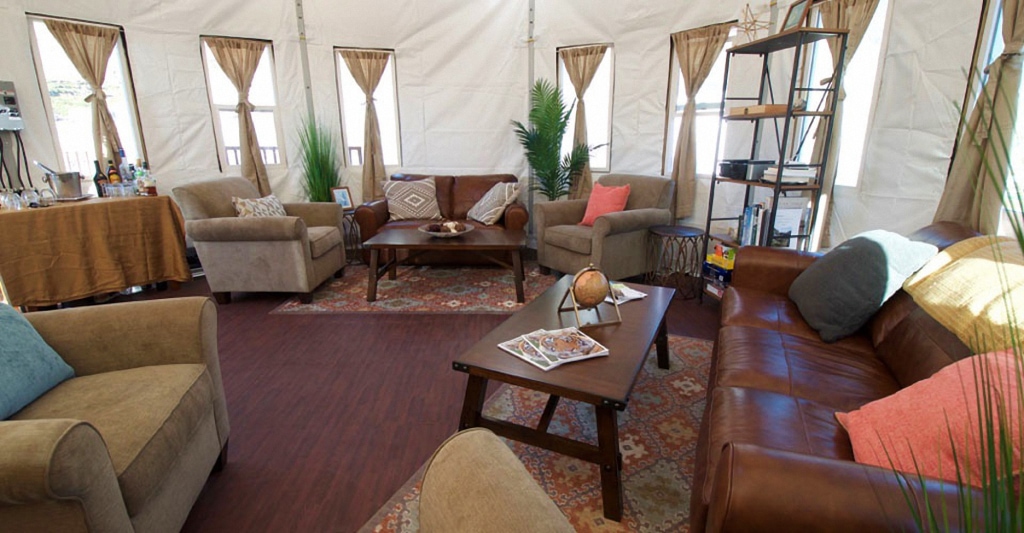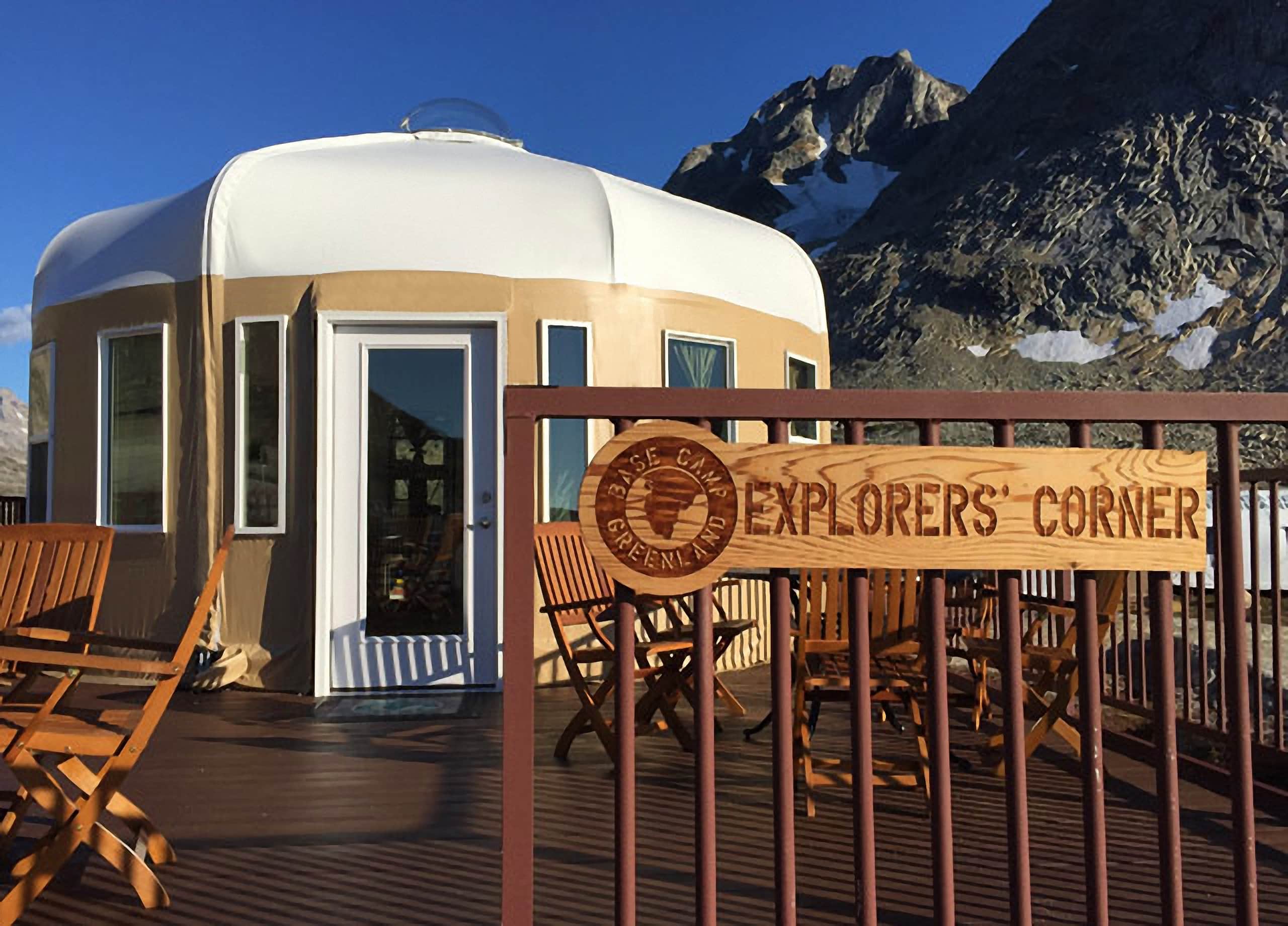Whether you are building a cozy structure for the piece of land you bought in the woods or adding new options to your vacation rentals, both cabins and yurts are common choices. Here are some factors to keep in mind when deciding which to go with.
Aesthetics of a Log Cabin vs. Yurt
If you’re running a campground or Airbnb, you know that aesthetics matter. Before they get a chance to check out your cabin or yurt in person, people will see photos and decide if your options are the right fit.
First and foremost, the circular feel of yurts is pleasing in an almost ineffable way. For thousands of years, many human societies have lived in circular dwellings. Yurts have become more and more popular in the last 20 years, especially for this reason.
Cabins, on the other hand, will have more of a rustic feel. For some people, this is an integral part of being in the wild, where most cabins and yurts are built.
While cabins have a rustic appeal, yurts from WeatherPort® have a modern exterior.
Windows and interior design should be fairly comparable, as most yurts come with various customization options (more details below).
Customization Options for Log Cabins vs. Yurts
Custom-building a structure from scratch will always give you the most customization potential, so if you have a very specific vision for your space’s layout, construction materials, and decor, designing a cabin is probably the best choice.
However, people are often surprised by the customization capabilities of yurts. For example, WeatherPort yurts come in five sizes (12, 18, 20, 24, and 30 feet) and can be integrated with a loft system to create a two-story retreat. WeatherPort’s high-strength steel frame system allows for the custom door, window, and skylight options, as well as lighting, electrical, and insulation systems.
WeatherPort also gives you the option to add your logo or custom graphics to your yurt, as well as choose your preferred color for both the fabric and the powder-coated steel frame. These customizations can turn your rustic camping stay into a modern glamping experience.

WeatherPort Yurts at Royal Gorge Rafting & Zipline Tours
Ease and Efficiency of Setup for Log Cabins and Yurts
One of the most noticeable differences between cabins and yurts is setup. Cabins, being either wood or brick and mortar, need to be constructed on-site or transported post-construction. In areas with large snow loads or extreme weather, neither of these options is ideal.
Yurts, on the other hand, can often be shipped in low-cube packaging directly to your site for quick and easy delivery.
Cabins also require you to clear and level the site and lay a foundation — such as a concrete pad, pile, or plinth — before you can start construction. While yurts require a level surface as well, WeatherPort structures offer strong and field-tested alternative anchoring options that reduce the time (and complexity) of site preparation. For example, many WeatherPort customers use ½-inch diameter spikes or duckbill anchors to anchor their yurts directly into the ground.
Cabin construction times depend entirely on the size of the building, but a popular log cabin company says that log cabin construction often takes around eight or nine months. To save you time, money, and stress from waiting so long, WeatherPort yurts are engineered for rapid setup with minimal skill and equipment requirements.
For comparison, Royal Gorge Rafting and Zipline Tours recently constructed six 20-foot diameter yurts from WeatherPort in 16 days.
The Durability of Log Cabins vs. Yurts
Many people assume that cabins are much more durable than yurts, but this isn’t actually the case: WeatherPort tensioned fabric membranes and high-strength galvanized steel frame systems are engineered for durability and longevity, providing decades of use in the harshest of climates.
Additionally, our architectural membranes can withstand heavy wind and snow loads, will not rot, are mold- and mildew-resistant, and exceed the fire safety requirements outlined in the California Code of Regulations for membrane structures.
While you can build a cabin to be equally durable, this will come down to your design decisions and the quality of your construction. The benefit of using WeatherPort yurts is that you don’t have to worry about upkeep. Once set up, a WeatherPort yurt is virtually maintenance-free. Compare this to the typical log cabin, which needs to be resealed every three to seven years, among many other upkeep requirements (and costs).
Ability to Relocate Log Cabins vs. Yurts
The most common reason to build a yurt or cabin is to escape from daily life and enjoy the beauty of nature. This is the same reason many people go camping, but the added benefit of camping is that you can choose a new destination for every outing, enjoying the beauty of more than one place.
This ability to relocate is essentially out of the question with cabins, but not with yurts. WeatherPort yurts are designed to be easily disassembled, and the same low-cube shipping and minimal site preparation requirements that made setup easy the first time will make relocation and reassembly somewhere else just as simple.
Imagine placing your getaway in the middle of a forest one year and along the shores of your favorite lake the next year. WeatherPort yurts make that possible.
Cost Comparison of a Log Cabin vs. Yurt

Photo courtesy of Natural Habitat Adventures
Last but not least, the cost will be a major concern for anyone choosing between a cabin and a yurt.
If you go with a cabin and don’t have the know-how to build it yourself, you’ll have to consider the cost of labor — and recall that construction could take as long as nine months. This will be the most expensive cost for your project.
According to the same log cabin company, the cost of clearing the land averages $3 per square foot. The company also suggests clearing five extra feet on each side of your cabin, meaning that clearing land for a 20-by-20-foot cabin would cost $1,875.
You’ll also need to consider the cost of laying the foundation (which will vary depending on the kind you choose), as well as the cost of the materials, insulation, and utilities. Keep in mind that installing utilities requires a lot of groundwork, such as digging trenches to lay the piping, which could require hiring a builder and surveyor and add to your expenses. If you decide to build the cabin yourself, your budget should include the cost of all the tools and equipment that will be necessary.
The final price of building a log cabin is typically between $125 and $175 per square foot.
When comparing the cost of building a yurt, keep in mind that there are many companies that produce a single model of a yurt. These suppliers provide a total price for their yurt and tell you it is your responsibility to ensure it meets building codes for safety.
WeatherPort takes a different approach to determining the price of a yurt. Because every yurt is customized to the customer’s specific wants and needs, as well as engineered to meet local and international building codes, we can’t provide an exact cost.
Overall, WeatherPort yurts offer a lower life cycle cost than log or brick-and-mortar construction. This is due to the yurts’ many cost-saving benefits, including:
- Minimal foundation requirements
- Less site preparation and preconstruction work needed
- Fewer logistical expenses for transportation due to lower weight and smaller cube size
- Drastically reduced construction times
- Minimal tool or equipment requirements needed for construction
- Ability to be installed by unskilled labor:
- Easy setup does not require the use of expensive setup crews, supervisors, or builders with previous experience. However, WeatherPort does provide setup crews and supervisors to those who want them — usually because they are in a rush to set up.
- Plug-and-play lighting and electrical systems that don’t require the use of a certified electrician¹
- Energy-efficient design and energy-saving systems designed to seamlessly integrate with our building solutions (like skylights and insulation packages)
- Virtually maintenance-free design
- The ability to easily relocate from one site to the next
You may be in a rush to create your new outdoor retreat, but don’t overlook these considerations when deciding what kind of structures to go with. The right structure can make all the difference in the quality of the experience for you or your customers.
If you would like more information about WeatherPort yurts or our other building solutions, please contact us using the following:
Tel: +1-970-399-5909
Email: info@weatherport.com
Web: www.WeatherPort.com
¹A certified electrician may be required to connect the electrical distribution panel to shore power or local power utility. Please check with your local or state requirements.

Leave A Comment